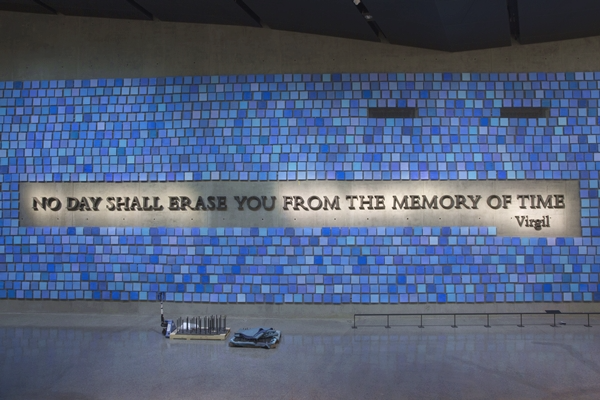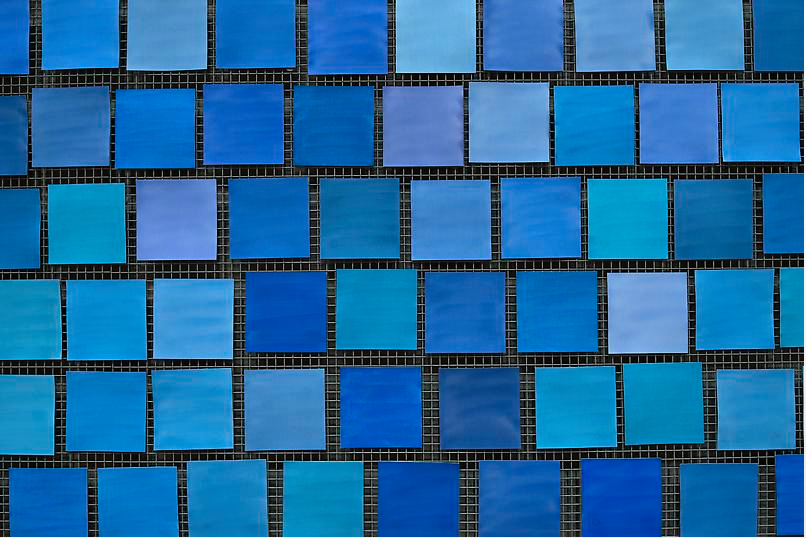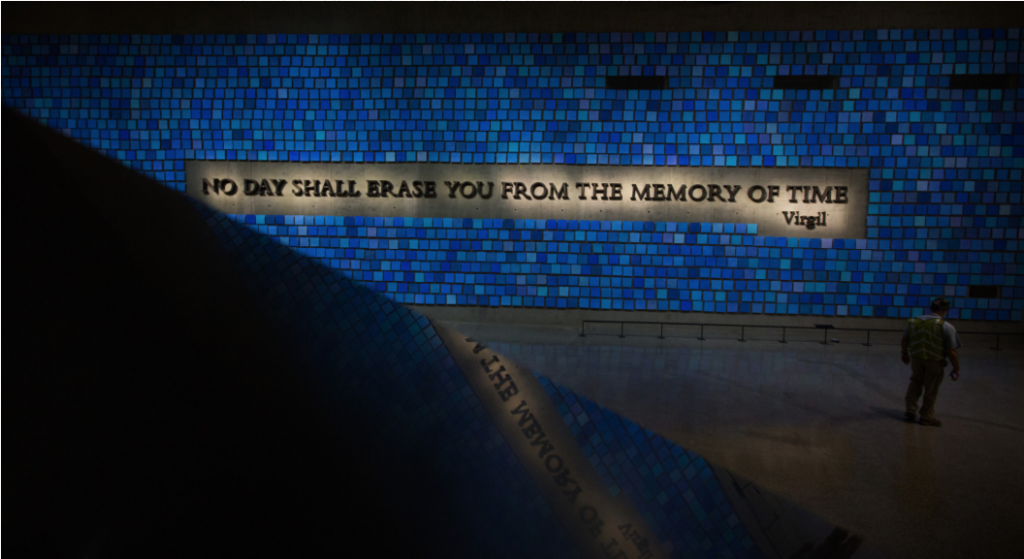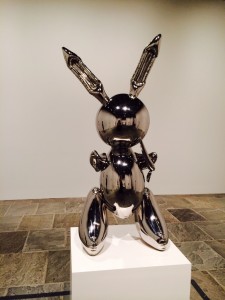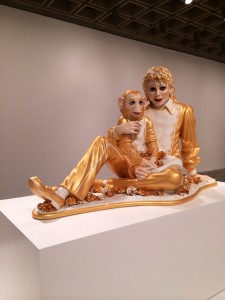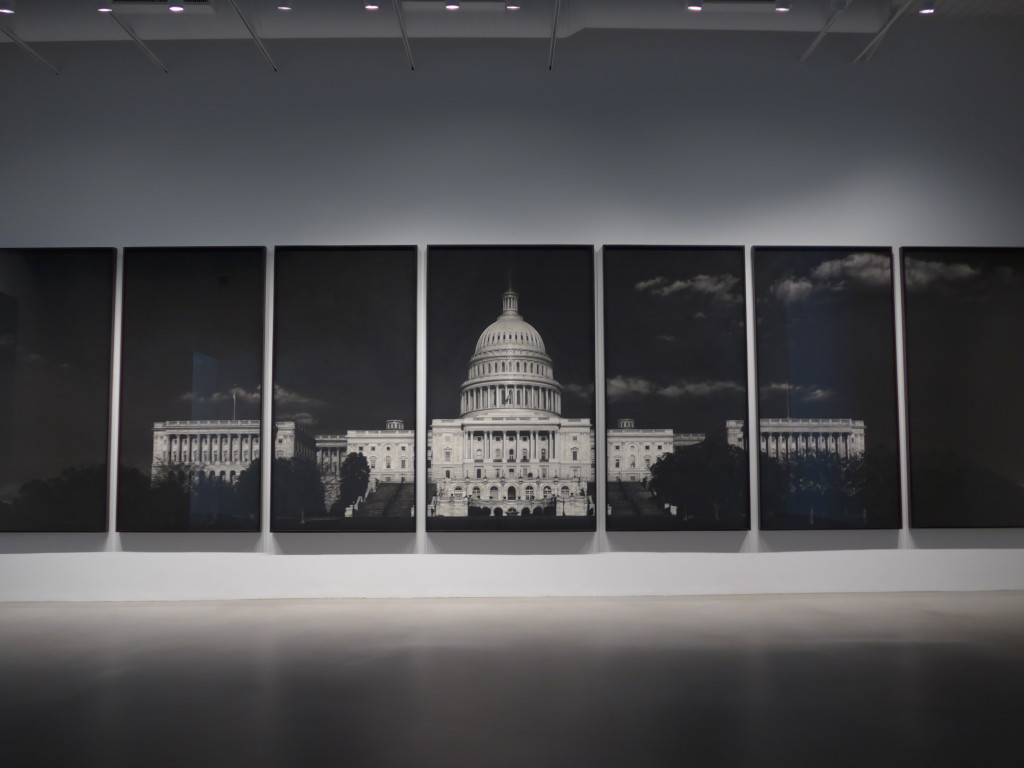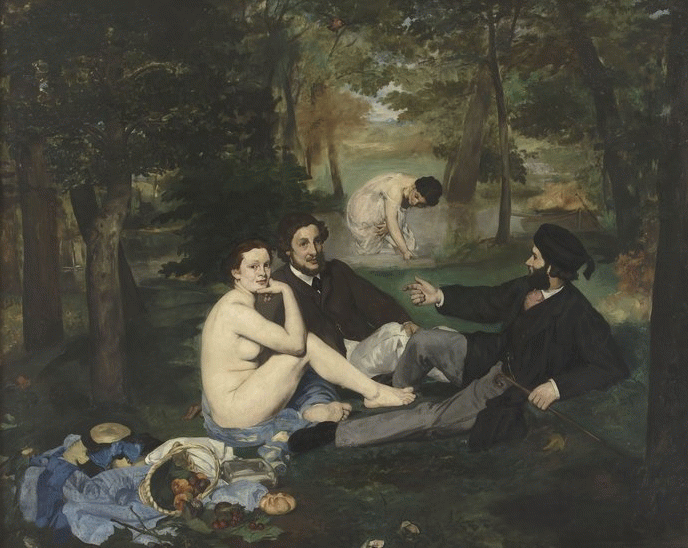Today marks a day forever embedded in our memories. It’s a day we wish we could forget; a day we wish never happened. Nearly 3,000 individuals lost their lives on September 11, 2001, but to the families there may be only one name on that list that, when called out during today’s memorial, causes their deepest 13-year wound to ache anew.
Painting
Spencer Finch and the 9/11 Memorial
September 11, 2014
The Koons Effect
July 23, 2014
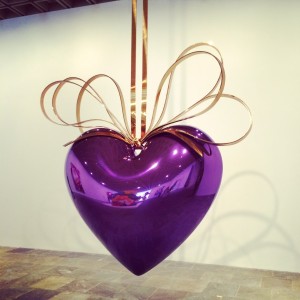 Thirty five years of inflatables, naked ladies, colored mirrors, basketballs, vacuum cleaners, and cartoon animals have gathered together for the first time. The menagerie of sculptures and paintings range from super-sized shiny to blandly ubiquitous, at times cerebral and at other times really in your face. He’s an extrovert who often makes somewhat uncomfortable comments about inflatable toys, like “The sexual power of the imagery was so intoxicating to me visually that I had to have a drink.” We are enchanted by his prolificness, his whimsy, and his celebrity. Collectors and speculators throw gobs of money at him for enormous metal Popeyes, lobsters, and balloon dogs. I’m talking, of course, about Jeff Koons whose first New York retrospective is currently on view at the Whitney Museum of American Art. Jeff Koons: A Retrospective is a celebration of an artist’s uncanny ability to make metal look plastic and Michael Jackson look white.
Thirty five years of inflatables, naked ladies, colored mirrors, basketballs, vacuum cleaners, and cartoon animals have gathered together for the first time. The menagerie of sculptures and paintings range from super-sized shiny to blandly ubiquitous, at times cerebral and at other times really in your face. He’s an extrovert who often makes somewhat uncomfortable comments about inflatable toys, like “The sexual power of the imagery was so intoxicating to me visually that I had to have a drink.” We are enchanted by his prolificness, his whimsy, and his celebrity. Collectors and speculators throw gobs of money at him for enormous metal Popeyes, lobsters, and balloon dogs. I’m talking, of course, about Jeff Koons whose first New York retrospective is currently on view at the Whitney Museum of American Art. Jeff Koons: A Retrospective is a celebration of an artist’s uncanny ability to make metal look plastic and Michael Jackson look white.
Americana
April 29, 2014
Art inspired by good ‘ole U.S.A…
I love America. We have a unique and proud history, but not without its dark days. Robert Longo captures some of our crowning achievements and somber moments in his exhibitions at both Petzel and Metro Pictures galleries. He is an insanely skilled artist who, for the past 30 years, has presented charcoal drawings with photographic precision. Longo’s colossal Untitled (Capitol), 2012-2013, is a testament to the might of our monuments. It is also a symbol of our often polarized nation, being the site of both inaugurations and protest. Another work in the show, Untitled (Black Jack Boot), pictured here, poignantly captures a day of mourning in America by depicting the riderless horse and empty boot that led President JFK’s funeral procession
Spring into Chelsea
April 18, 2014
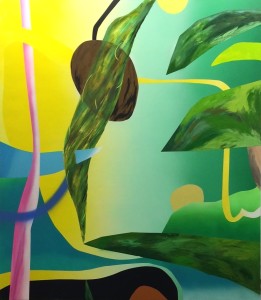 Perhaps it was the warm sunny weather and the reintroduction of color into my New York world, but on a recent stroll through Chelsea galleries I couldn’t help but notice all the vibrant large-scale paintings on view. If they were Rorschach tests I’d probably see palm trees and sailboats. They emanated warmth. In all seriousness, I saw alluring new works by artists who engage with painting by layering various materials and methods. While these four are not the first to mix ingenuity with painting, they are a strong bunch to keep on your radar. Here’s a highlight:
Perhaps it was the warm sunny weather and the reintroduction of color into my New York world, but on a recent stroll through Chelsea galleries I couldn’t help but notice all the vibrant large-scale paintings on view. If they were Rorschach tests I’d probably see palm trees and sailboats. They emanated warmth. In all seriousness, I saw alluring new works by artists who engage with painting by layering various materials and methods. While these four are not the first to mix ingenuity with painting, they are a strong bunch to keep on your radar. Here’s a highlight:
Musings on Manet
April 16, 2014
I inaugurate this endeavor with a note on the artist who, in my humble opinion, revolutionized our ideas of art. Or, rather, what art can be.
The renegade Edouard Manet: a classically trained painter who used the Academic modus operandi to then challenge its very authority. His paintings are not only beautifully rendered; they represent a crucial turning point in art history. My passion for contemporary art begins with Manet’s Le dejeuner sur l’herbe, 1863. Actually, I adore everything Manet painted but if I must pick a favorite it is certainly this iconic luncheon on the grass; an image that had the power to shock, question, contradict, and transfix. Le dejeuner sur l’herbe was rejected from the Salon in 1863 as the jury found that a nude figure within a landscape (brazenly gazing straight at them!) was much too scandalous. Now, the work hangs with pride in the galleries of the Musée D’Orsay in Paris and appears in every art history textbook.
Manet was one of the greatest rule-breakers contemporary art has known. His paintings weren’t about history or allegory or portraiture or landscape; they were about painting. He blurred the lines between the Academic hierarchies and focused on light, color, form. Because of him, Impressionism happened. Expressionism happened. Dada happened. Marcel Duchamp set a urinal atop a pedestal. Everything changed in terms of what it meant to be an artist.
